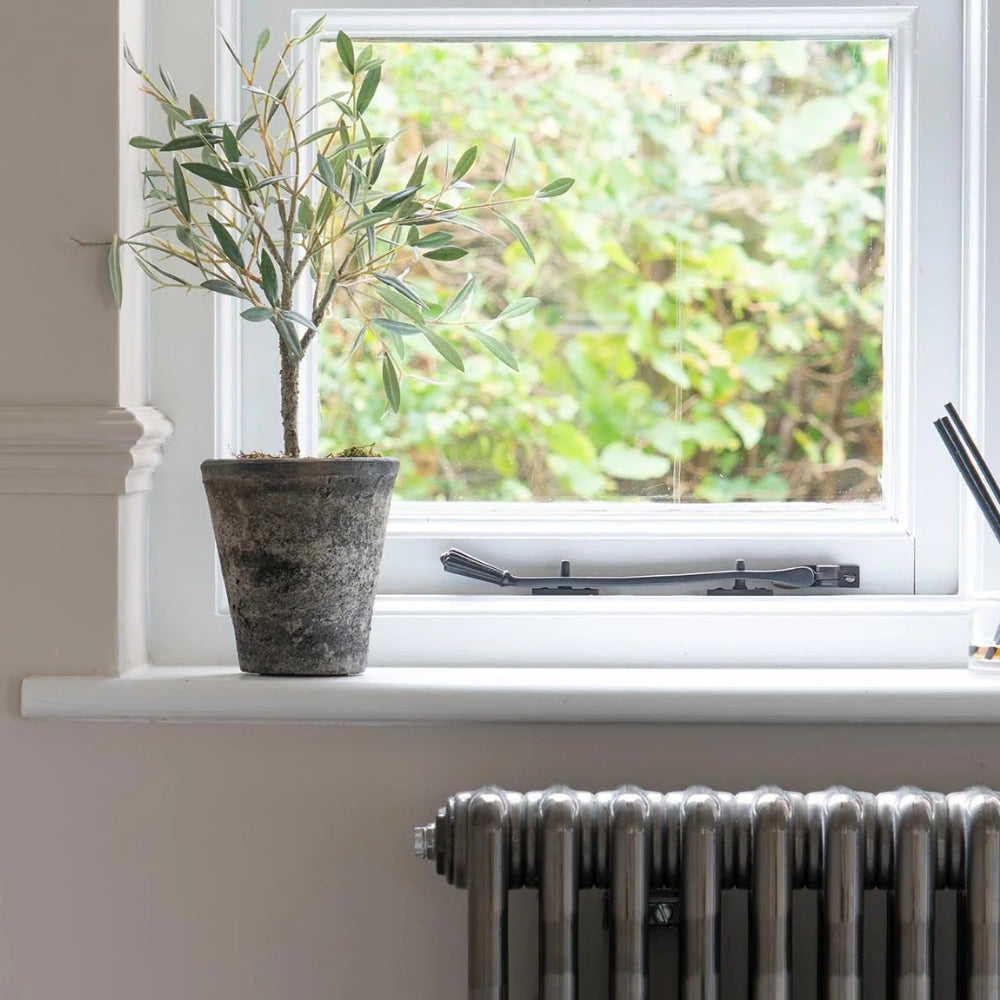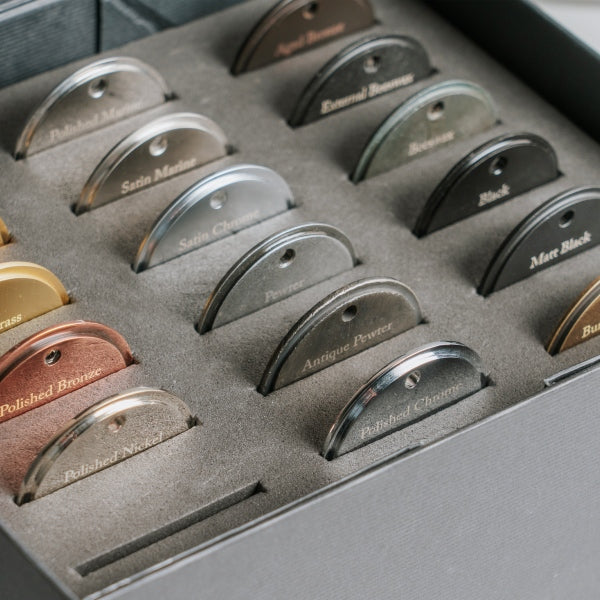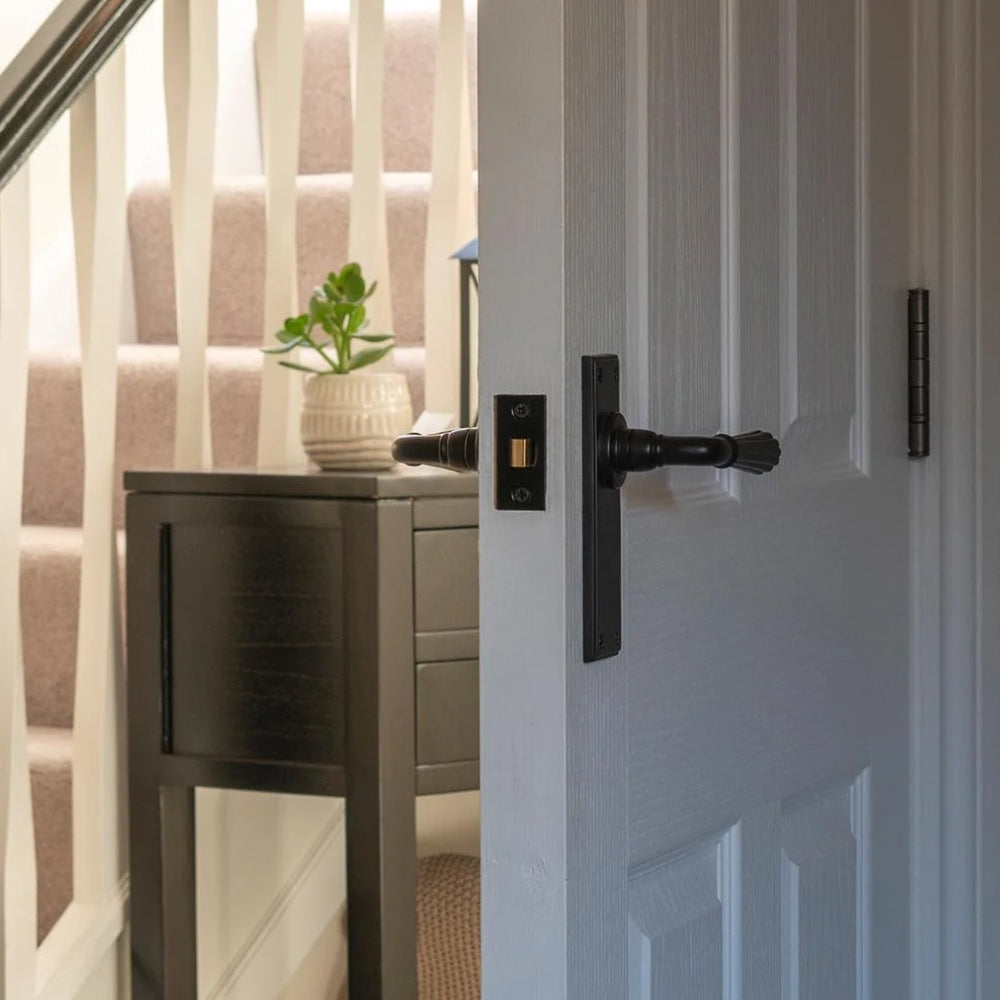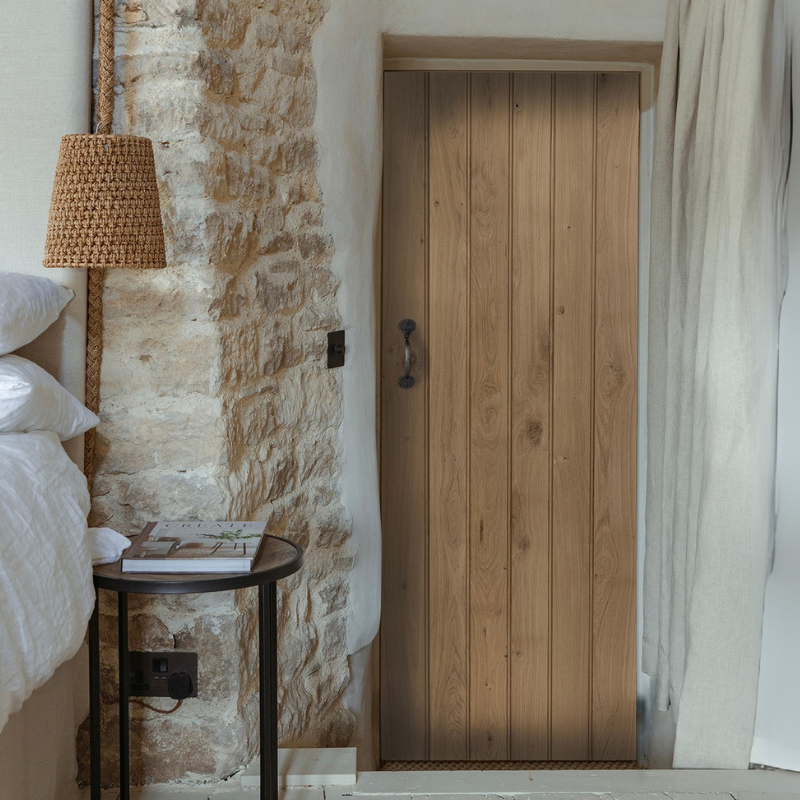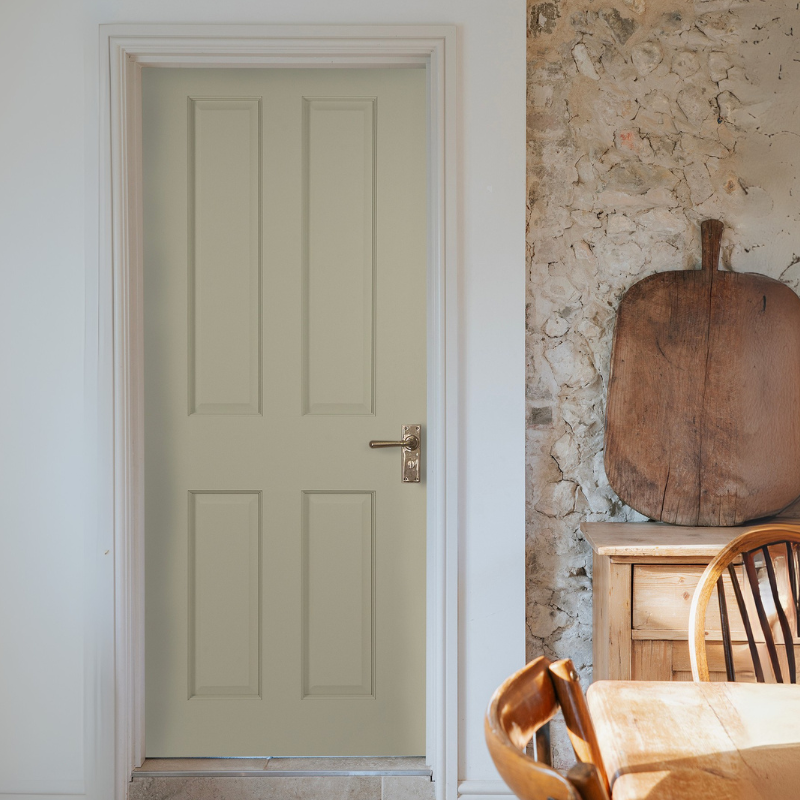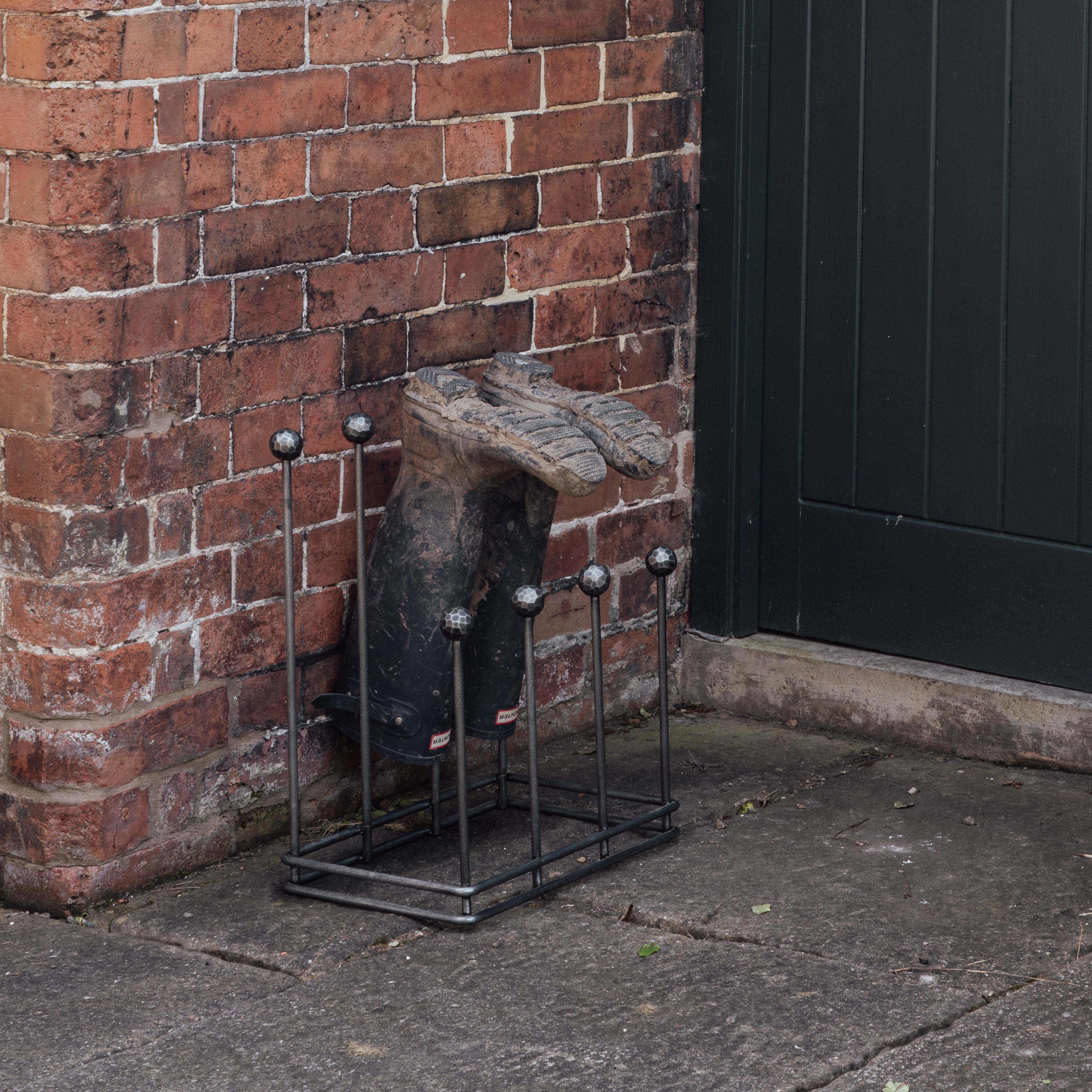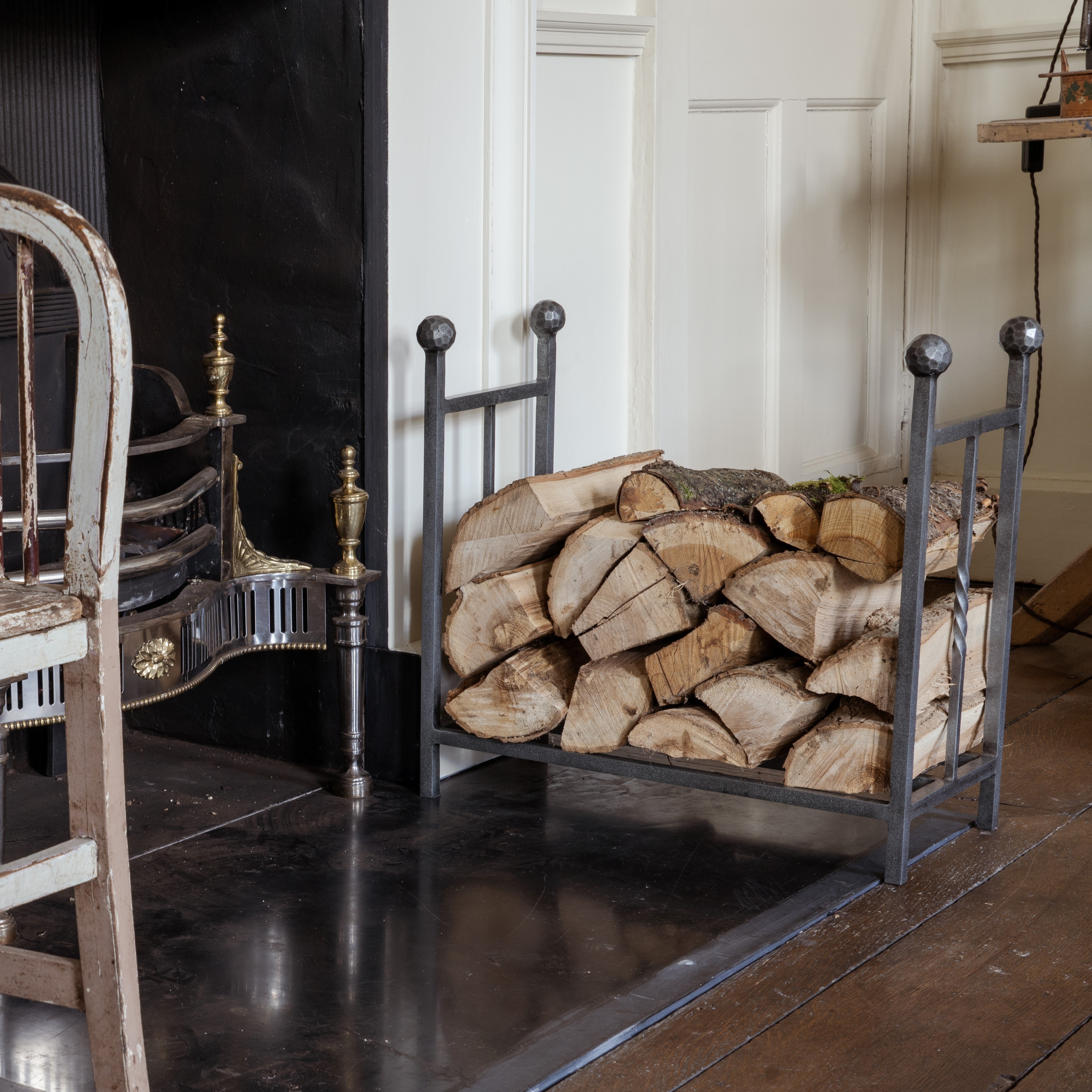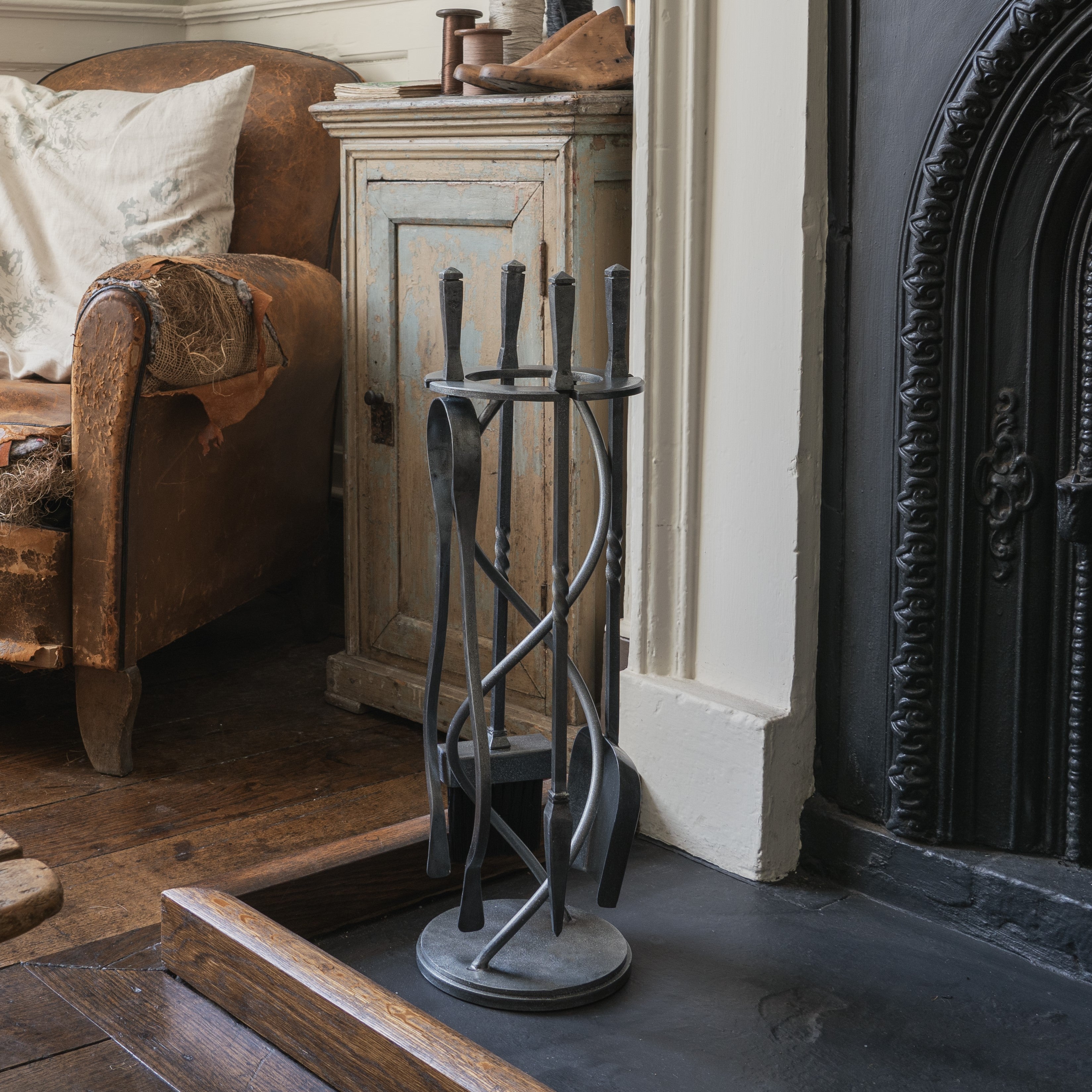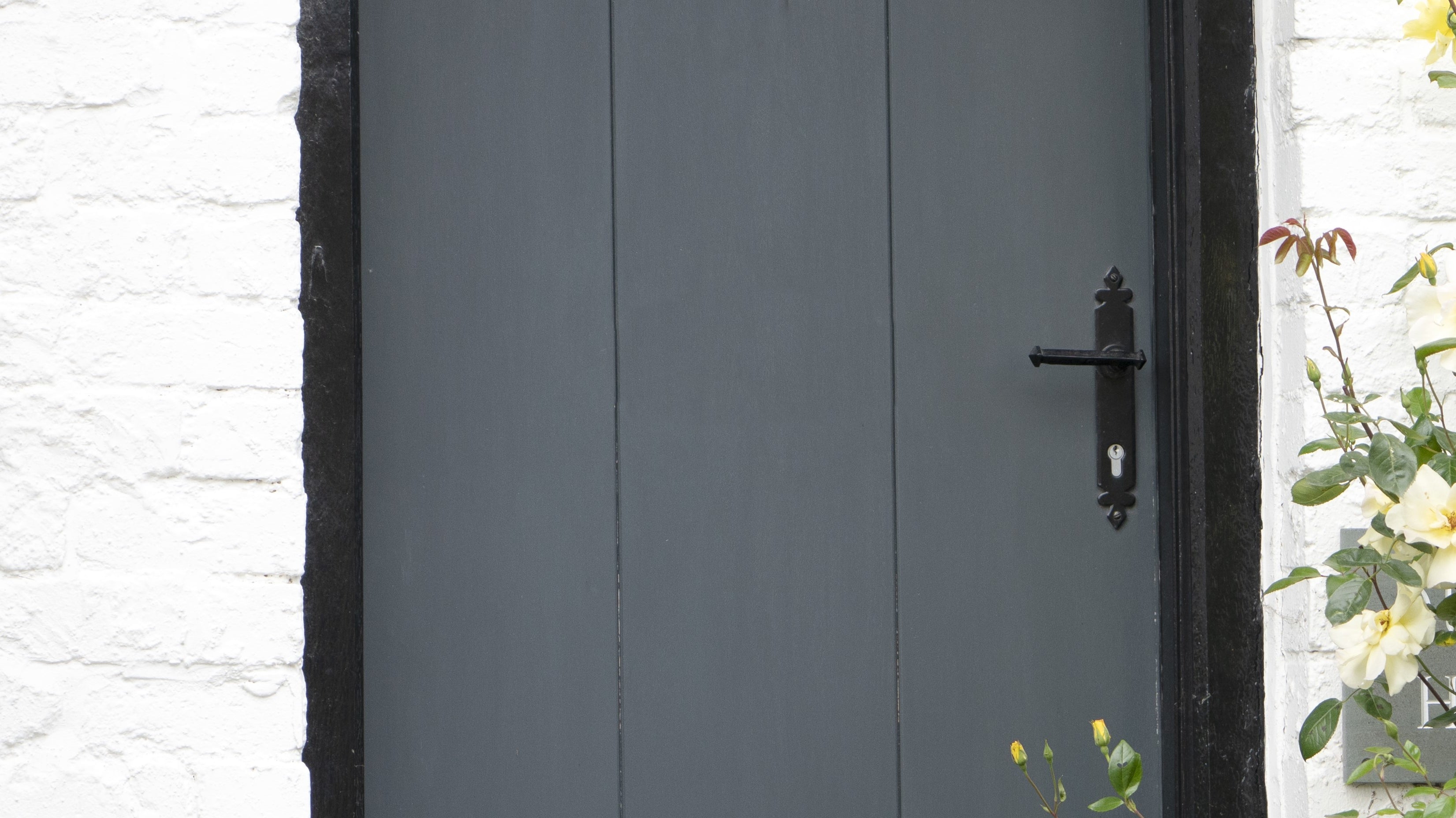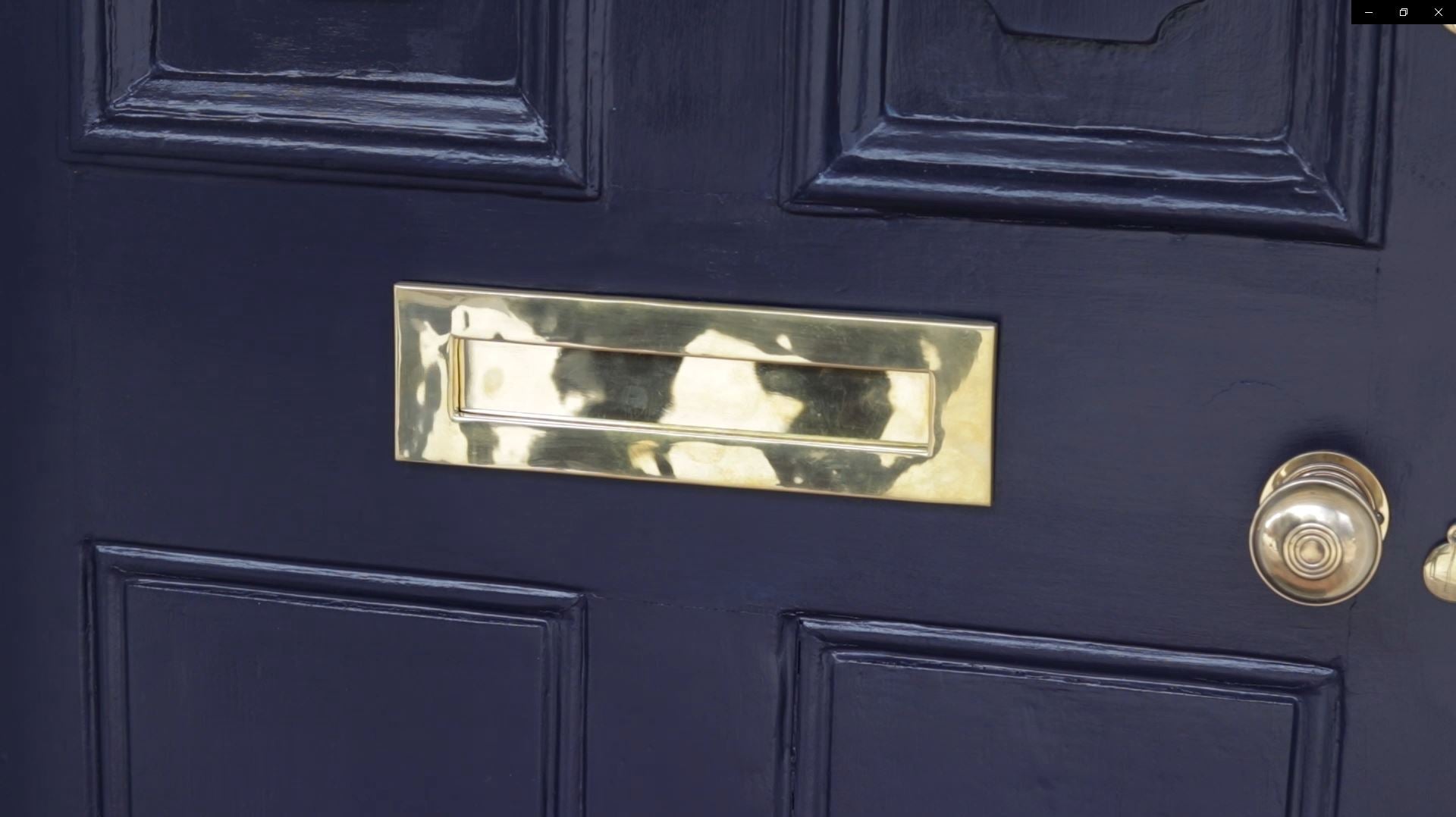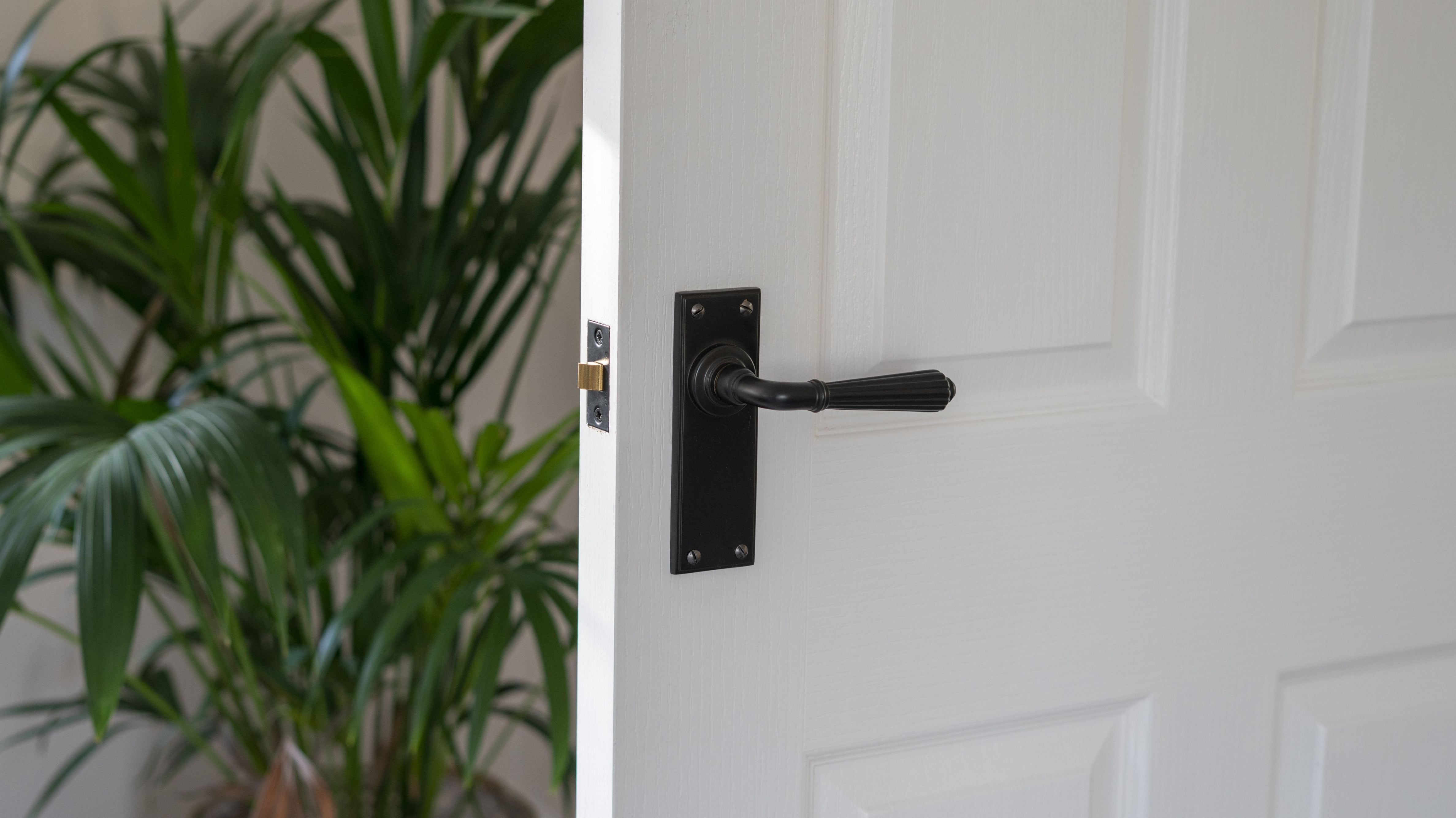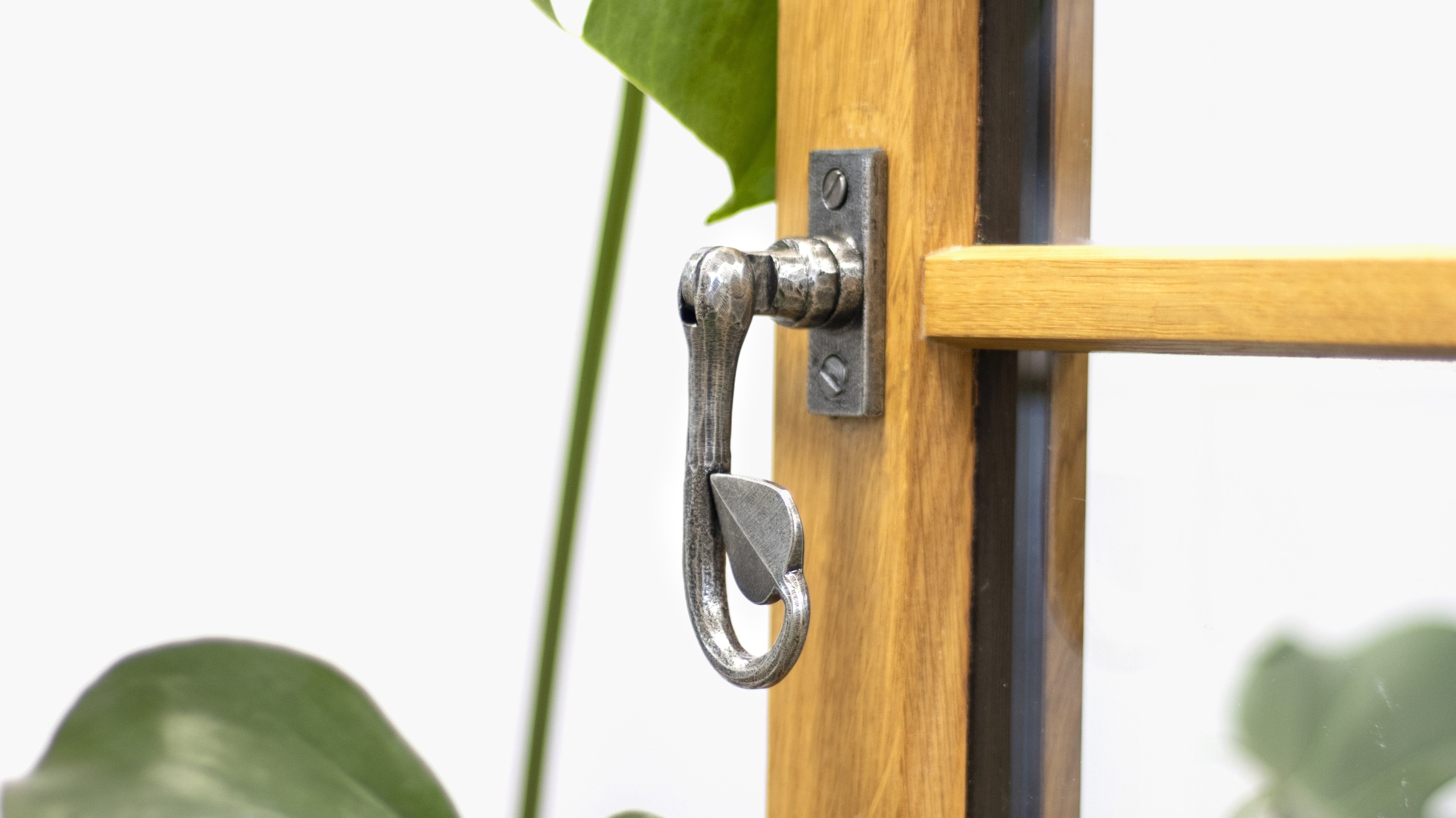Box and Rim lock are traditional pieces of door hardware which have existed for centuries. From The Anvil's Oak Box Lock offers one of the most secure locking configurations of all the rim locks due to the 5 lever British Standard lock inside.
Box Locks like this offer a stylish and solid feel to any door.
Contents
Parts of a Box Lock

Oak Box
This oak box is made from English oak from sustainable sources and is hollowed out to allow easy insertion of the British Standard 5 Lever lock. Comes with a matching keep box also hollowed out to allow insertion of the lock keep. A quality item which is hand crafted by our carpenters in the UK. The product comes unfinished for you to apply any finish you choose, if desired.
Ironmongery
The box lock comes complete with a set of two Octagonal knobs with loose roses, two escutcheons, and three decorative over-bars (also known as straps). The ironmongery items are all hand forged and come in a choice of two finishes: Pewter Patina and Black.
Lock Mechanism
Our box locks are supplied with a 5 Lever British Standard mortice lock which is reversible and insurance rated.
Fixing Screws
This set contains all matching fixing screws required for assembling the product and for fitting it to your door. Before fitting, make sure the screws are the correct length for the thickness of your door.
Tools Required
- Oak Box Lock Set
- Pencil
- Screw driver
- Electric drill
- Allen key
- Fixing screws
How to Fit a Lock Box
1. Position the lock box
Position the oak block on the edge of the door so that the knob will be positioned at a suitable height for comfortable use (approximately 1m from the floor, though this may vary depending on your height and the height of your door).

2. Position the over-bars
Once you're happy with the position of the oak box, hold it against the door and position the over-bars to suit your style. Once you're happy with their positioning, mark the screw holes with a pencil.

3. Fit the lock box
Fix the box lock to door using the screws and over-bars provided.
Ensure you take care at this stage and use a screw driver to avoid rounding off the screw heads.

4. Drill the holes
If you're happy with the position of the oak block, proceed to drill the spindle and key holes through the entire thickness of your door.

5. Rotate the lock (if required)
Decide whether you're using your latch left- or right-handed. Depending on your choice, you may need to alter the direction of the latch. You can do this by removing three small posi screws on the side of the lock case, removing the lock, turning it around, and carefully re-inserting it into the oak box and fix using the screws provided.

6. Fit the knobs
Once your box lock is fitted to the door, you're ready to fit the knobs and escutcheons.
To fit the door knobs, you need to loosen the small grub screw at the base of the knob using the Allen key provided. From The Anvil's Oak box locks are supplied with their Octagonal knobs, but if desired, you can replace this with any of their cabinet knobs of the same size.
Screw the knob onto the appropriately sized threaded spindle. Screw the knob until it fits securely and the grub screw is positioned to sit on the 'V' shaped groove of the spindle.

7. Tighten the knobs
When the groove lines up with the grub screw hole, tighten the screw to secure the knob onto the spindle whilst ensuring you do not over-tighten.
Once the first door knob has been fitted on one side of the door, you can fit the second knob to the other side of the door using the same method.
The escutcheons can also now be marked, drilled, and fixed to the surface of the door to cover the drill hole made for the key.

8. Fit the keep
Next, you're ready to fit the keep to the frame. This needs to be held in position so it's at the exact same height as the box lock.
Once the position has been set, mark the position of the screw holes with a pencil. Then drill and countersink two holes under the bar area. Fix the keep in place using the screws provided.
Insert the metal keep and fix the face plate to the oak keep.

9. Check your work
Check everything works properly when you shut the door and ensure it remains in place when closed.

10. Seal the oak
If you're using your oak box lock externally, we recommend oiling or sealing it to protect it against harsh weather and dirt build up. If you're using your box lock internally, you can skip this step if desired.
Please note that the length of the keys included with our oak lock box sets are suitable for doors up to a thickness of 44mm. If your door exceeds 44mm thickness, we can offer lengthened keys - please contact us for this service.

Safety Precautions
- Protect your ears when using power tools (such as electric drills) by using ear plugs or defenders.
- Ensure you have all the safety equipment required before starting your project. Depending on the tools you're using, this may include a dust mask, safety goggles, or a hard hat.
- When cutting, sanding, or drilling wood, ensure it is tightly secured in place, such as by using a vice or work bench.
- When using sharp or electric tools, ensure they're always directed away from your body to minimise the risk of accidents.
- Keep long hair tied back at all times to avoid getting caught in drills and other power tools.






